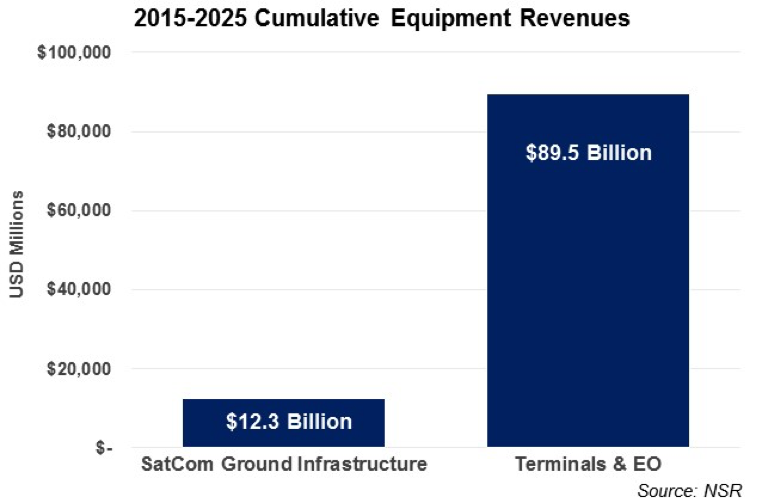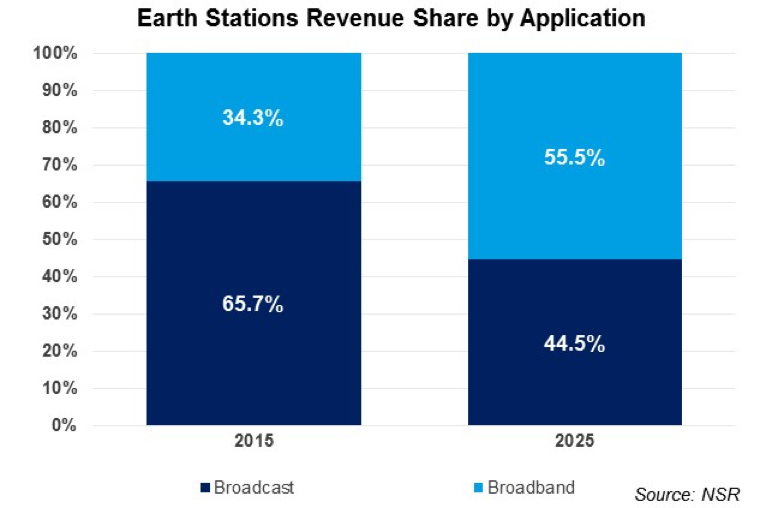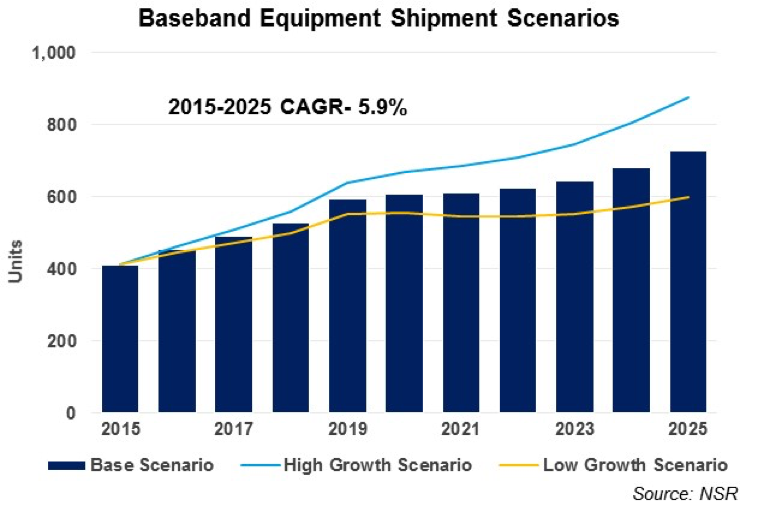Feeding the
Broadband Revolution
Sep
21st, 2016 by
Lluc
Palerm-Serra, NSR
Much has
been said about HTS and how it is
changing the industry: disruptive
satellites with orders of magnitude more
capacity, plummeting costs per Mb,
reaching new markets… but very little
analysis is available on how these new
data pipes will be fed.
How do SatCom
Earth Stations and Baseband Equipment
need to adapt to the HTS world? Where
are the ground-based opportunities in
this emerging market?
NSR’s
Commercial Satellite Ground Segment
report looks into these newly forecasted
market segments,
which are
unavailable from any other source. The
cumulative revenue for the SatCom Ground
Infrastructure equipment (Baseband and
SatCom Earth Stations) surpasses $12
billion in the next 10 years. But more
importantly, these segments hold the key
to opening opportunities in other
verticals.

Skyrocketing data throughputs,
multiplying number of carriers, more
powerful beams, a leap change in the
number of terminals supported… are just
a few examples of the profound changes
HTS is imposing on ground
infrastructure. Cost of equipment cannot
scale with performance, and there is
pressure to provide enhanced performance
at the same or reduced cost.
What
are the key focus areas for the ground
infrastructure actors?
SatCom Earth Stations
Demand for
Broadband Earth Stations, particularly
serving HTS satellites, will attract the
most demand in the vertical. Despite
flat revenue growth for Earth Stations
in the next 10 years,
revenues for Broadband stations will
continue to grow at over 4% CAGR,
mitigating the drop in demand for Video
Stations. Growth in new DTH platforms in
emerging regions and transition to
UltraHD still provides some
opportunities, but
the real
growth story for Earth Stations is
centered on systems serving the HTS
boom.
These
Broadband Stations will progressively
capture a larger share of revenues in
the vertical.

HTS poses a new set of requirements
for teleports. With more powerful
satellites, together with more efficient
and powerful amplifiers on the ground,
the need for large antennas is
diminishing. The traditional 36 MHz
transponder is no longer generally
applicable, and electronics need to
adapt to efficiently saturate the new
larger transponders. Obviously, new
frequency bands require adapted antennas
and electronics, but also new levels of
redundancy with multiple access points.
The applications served also change the
way ground infrastructure is planned. A
proliferation of IP applications, better
backbone connectivity in developing
countries and regulations or simply the
convenience of landing traffic locally
is growing the demand for Earth Stations
in emerging markets.
Baseband Equipment
New
Broadband services on HTS satellites
will have a deep effect on Baseband
Equipment. On one hand HTS is the clear
growth driver for the segment. But at
the same time, the new architecture is
transforming technological requirements
for Baseband systems. While shipments
for FSS networks will progressively
decline,
the sustained
demand for networks in newly launched
HTS satellites will drive shipment
growth at 5.9% CAGR in the next 10 years.

A typical investment in Baseband
Equipment for an HTS system
is
slightly below $1 million per Gbps. With
next generation (Ultra)-HTS satellites
already on the drawing boards, the cost
per Gbps needs to change dramatically.
The capabilities per rack are increasing
exponentially, while prices tend to
remain constant.
Similar to what is happening to Earth
Stations, performance requirements need
to adapt to the new architecture.
Baseband equipment needs to be able to
manage a larger number of terminals, a
greater number of carriers (as the
number of beams continues to grow),
wider outbound carriers adapted to the
new transponders, larger bandwidth per
terminal… the technological challenges
are varied, and all these demanding
features need to be met with the
aforementioned
budgetary
constraints.
Business Models are also changing
with the advent of HTS. Satellite
operators increasingly incur the
investment in ground infrastructure and
provide managed services. This means
that the same platform and Baseband
Equipment needs to serve a wide variety
of applications.
From Consumer
Broadband, Corporate Networks, Backhaul
or Mobility,
the terminal
is now the differentiating factor for
the application, while the Baseband
Equipment needs to be flexible enough to
be competitive in all those markets.
Furthermore, the high levels of
investment required is increasing the
sensitivity to risk, and many players
prefer
to pace
investment in ground infrastructure. The
capacity to invest in a scalable chassis
is a key selling proposition for
Baseband Equipment.
The nature
of traffic is also evolving, and
connectivity to the Internet with its
subsequent implications increasingly
plays a greater role.
Support of
bursty traffic, dynamic bandwidth
allocation, routing, acceleration,
compression, encryption, smart cache…
all are features that will differentiate
Baseband Equipment in the future
ecosystem.
Bottom
Line
The SatCom
Ground Infrastructure (Baseband
Equipment and Earth Stations) has a
vital role to play in the growth
development for Satellite Broadband
markets. The revenue opportunity itself
is attractive but more importantly,
these are key enabling elements for the
whole ecosystem.
With the advent of HTS, technology
requirements are changing. From
performance requirements (power, number
of carriers, transponder bandwidth), to
Business Models (managed services,
flexible applications, scalability), or
traffic nature (IP traffic,
acceleration, encryption, media, bursty
traffic), the challenges are wide and
varied. Additionally, it’s important not
to forget the cost component.
It comes as no surprise to NSR that
Eutelsat recently created a new
Terminals and Systems division to drive
the development of ground
infrastructure.
A lot of focus has historically been
placed on developing the next generation
satellites, but ground segment and space
segment elements must work together to
truly foster the Satellite Broadband
revolution ahead.